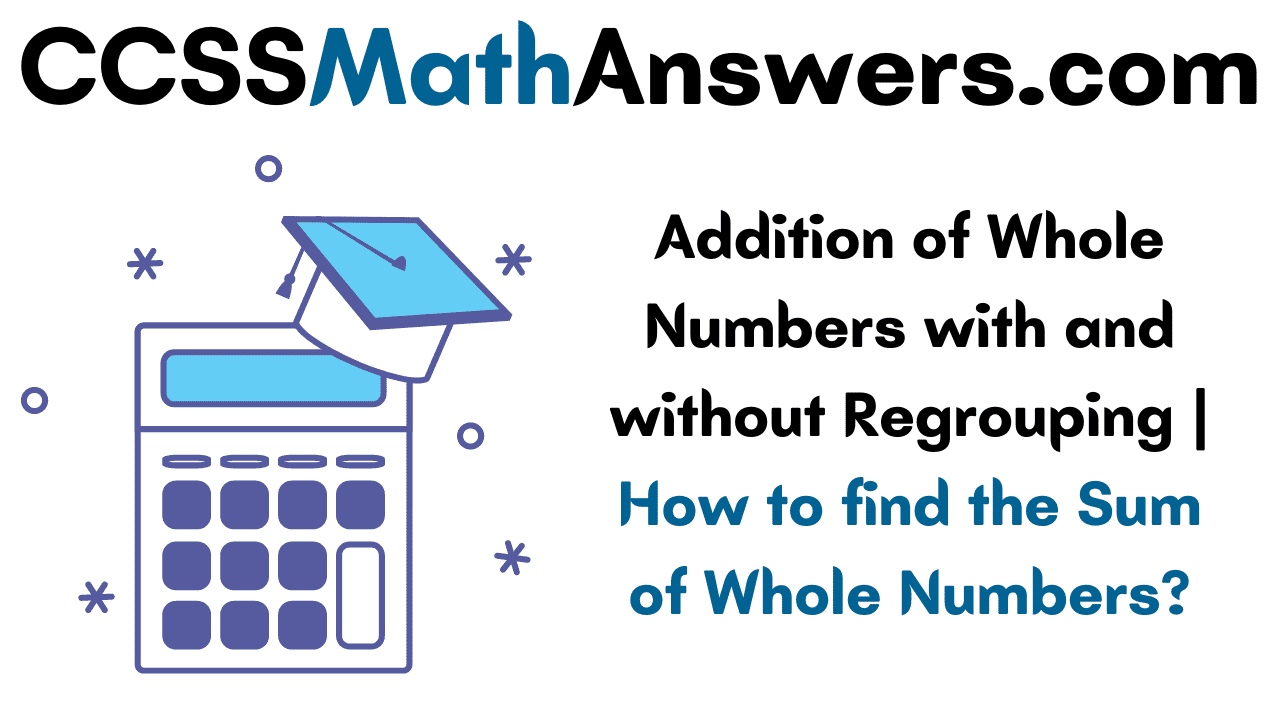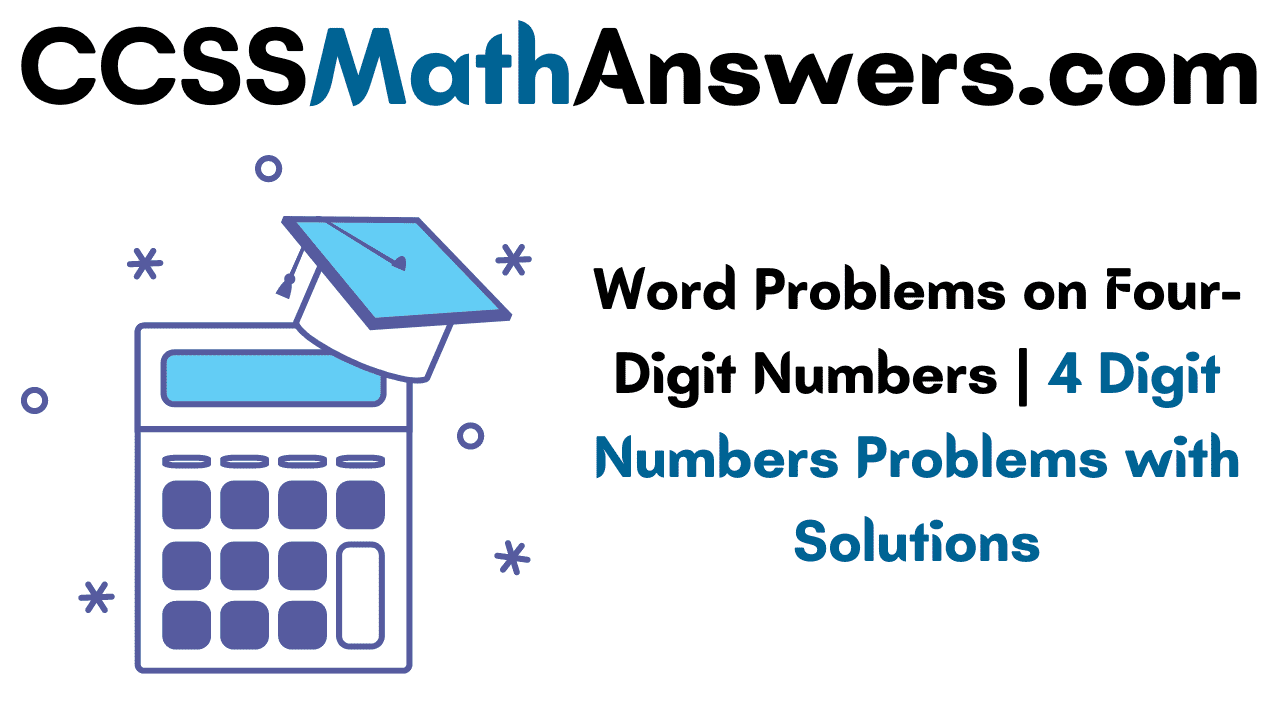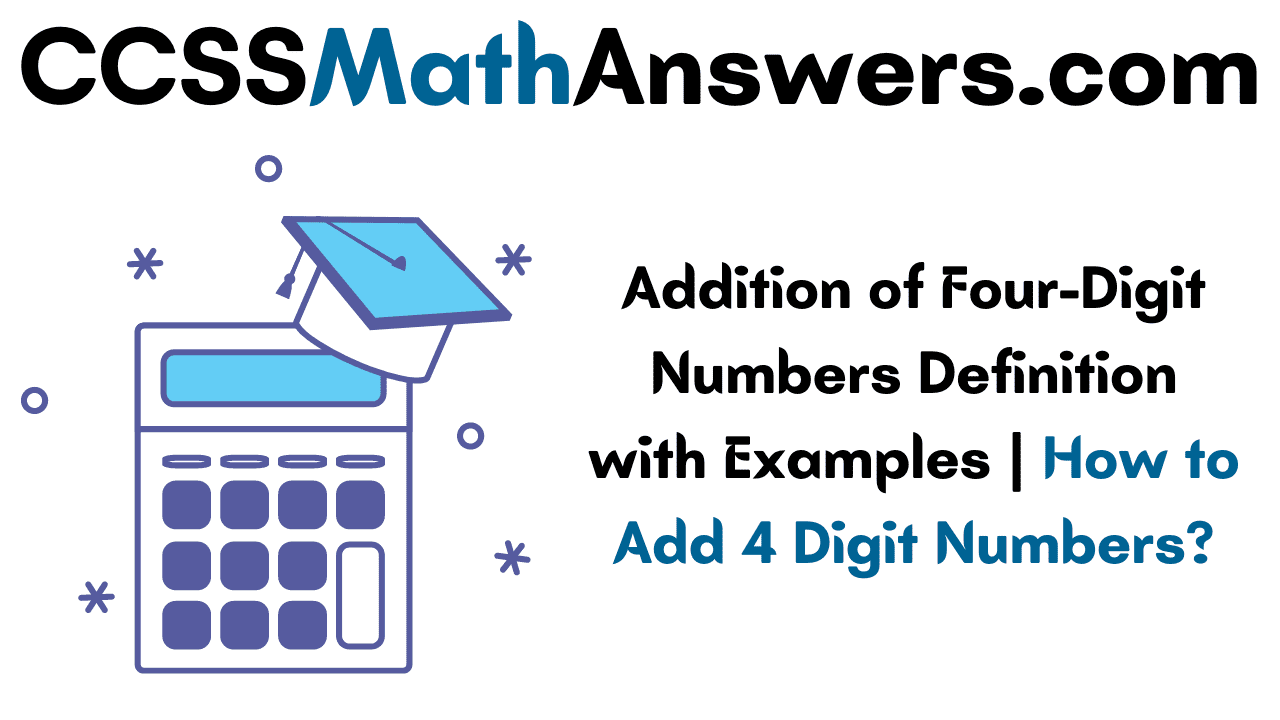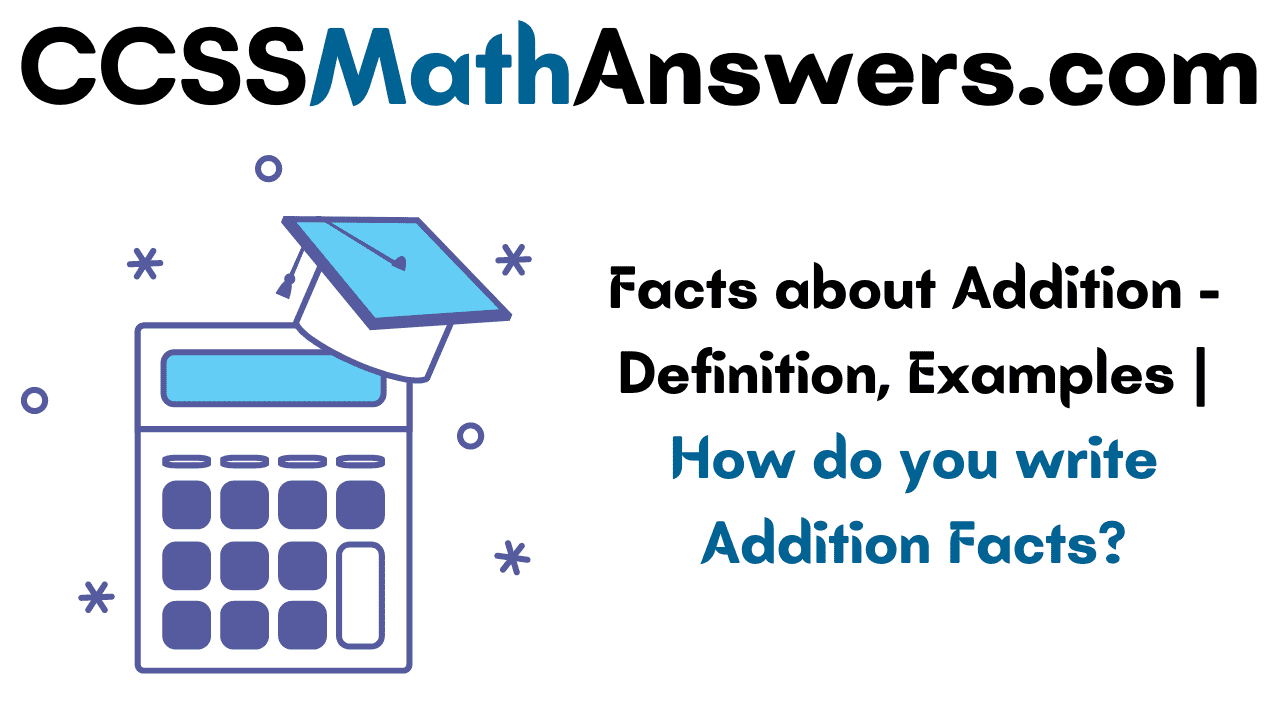Addition is defined as the process of combining two or more collections to form a third collection. The objects or collections which are being added are known as Addends and the result of the addition is known as Sum or Total. In this article, of ours we have compiled the Procedure on How to Add Whole Numbers with and without Regrouping, Representation of Addition, Properties of Addition of Whole Numbers, Solved Examples.
Do Read: Addition of Integers
Representation of Addition
The addition is written by using a mathematical operator plus “ + “, which is used to combine the objects and the equal symbol notated as “ = “ gives the total.
Example : 7 + 6 = 13
Seven plus six equals thirteen, where 7 and 6 are addends and 13 is the sum.
Properties of Addition of Whole Numbers
Property 1: Closure Property
Closure property states that any two whole numbers will add up to give another whole number. Suppose let us consider a and b are two whole numbers and they add up to obtain result c which is also a whole number that is a + b = c.
Example: 3 + 4 = 7, therefore 7 is also whole number
Property 2: Commutative Property
The commutative property states that the order of the addition does not change the value of the sum.
Let us consider a ,b are two whole numbers then a +b = b +a.
Example: let a = 5 , b= 7
5 + 7 = 7 + 5 = 12.
Property 3: Associative Property
The associative property states that when we add three or more whole numbers, the value of the sum does not change. We can group the numbers in any manner. The sum remains the same.
Let us consider a,b and c are three whole numbers , then a + (b +c) = (a + b) + c
Example: let a =3, b=4 and c = 6
3 + (4 + 6) = (3 + 4) +6 = 13
Property 4: Additive Property
Additive Property states that when zero is added to any whole number the whole number remains the same. Let us consider a as a whole number, then a + 0 = a = 0 + a.
Example : let a = 8
8 + 0 = 8 = 0 + 8
How to Add Whole Numbers? | Addition of Whole Numbers Step by Step
There are two different scenarios for adding whole numbers. They are along the lines
Case(i)
When the two numbers have the same number of digits
Step 1: Write the numbers vertically in columns.
Step 2: Starting from right to left, that is with one’s place add the digits in each place. If a sum in a place value is more than 9, carry to the next place value.
Step 3: From right to left, continue to add each place value, carrying if needed.
Case(ii)
When the numbers have different numbers of digits.
Step 1: write the numbers vertically in columns, it is easier to write the highest value on the top.
Step 2: Remember to write the lowest number in such a way that to line up the unit’s place of the highest number.
Adding Whole Numbers Examples with Solutions
Example 1:
Add 48 + 54 .
Solution:
Step 1: write the numbers in vertical columns and add the numbers in one’s place
i.e 8 + 4 = 12 , write 2 and carry 1 ten to the tens column
Step 2: Add the values in the tens place and also add the carry 1 ten
i.e 4 + 5 + 1 = 10
Therefore, the sum is 102.
Example 2:
Add 234 + 345.
Solution:
Step 1: write the numbers in vertical columns and add the numbers in one’s place
i.e 5 + 4 = 9 ( no carry)
Step 2: add the values in tens place
i.e 3 + 4 = 7 (no carry)
Step 3 : Add the values in hundreds place
i.e 2 + 3 = 5(no carry)
The sum is 579
Example 3:
Add 1046 + 2357
Solution:
Step 1: Add the values in ones place
i.e 6 + 7 = 13, write 3 and carry 1 ten to the tens place
Step 2: Add the values in the tens place and the carry forwarded
i.e 4 + 5 + 1 = 10, write 0 and carry 1 hundred to the hundreds place
Step 3: Add values in the hundreds place and also the carry forwarded
i.e 0 + 3 + 1 = 4(No carry)
Step 4: Add values in thousands place
i.e 1 + 2 = 3
Therefore, the sum is 3403
Example 4:
Justin’s family is going on a vacation. He packs 4 bags, his father packs 3 bags and his mother packs 2 bags. How many total bags are they taking on their vacation?
Solution:
Given
Number of bags packed by Justin = 4
Number of bags packed by Justin’s father = 3
Number of bags packed by Justin’s mother = 2
4 + 3 + 2 = 9 bags
Therefore, the total number of bags taking on their vacation = 9 bags
Example 5:
Add 35 + 234?
Solution:
Step 1: Write the highest number on the top and add values in one’s place
i.e 5 + 4 = 9(No carry)
Step 2: Add the values in the tens place
i.e 3 + 3 =6(No carry)
Step 3: Write the remaining 2 hundred value same
The sum is 269
Example 6:
In a bookstore, 356 A-type books and 78 B-type books are sold were sold per day. How many total number of books were sold per day?
Solution:
Given
Number of A type books sold = 356
Number of B type books sold = 78
356 + 78 = 434 books
Therefore, the total number of books sold per day in a bookstore = 434 books
Example 7:
Peter bought 130 chocolates and his brother Stanley bought 80 chocolates. How many chocolates they have?
Solution:
Given
Number of chocolates peter have = 130
Number of chocolates Stanley have = 80
130 + 80 = 210 chocolates
Therefore, the total number of chocolates they both have is 210 chocolates.










